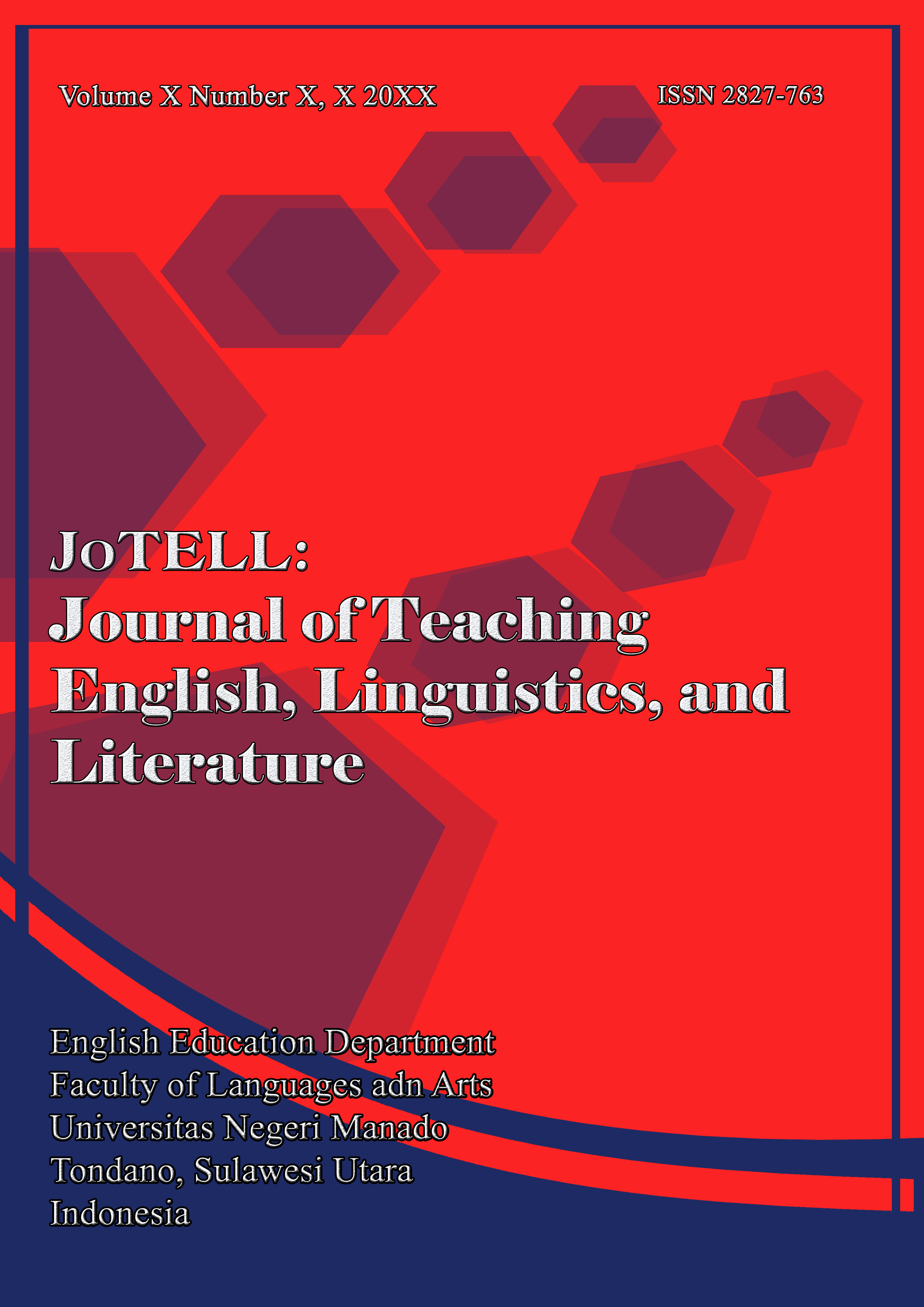THE USE OF SONG IN INCREASING STUDENTS’ VOCABULARY
DOI:
https://doi.org/10.36582/jotell.v2i8.5586Keywords:
Vocabulary, Song, increasing, teachingAbstract
Language is an essential component of human existence. According to Brown (2001), language is an arrangement of erratic, vocal images that allows everyone in a culture to communicate or work together. In many ways, English are very important to Indonesian education. Because it is taught as a foreign language, students are able to speak and write the language. studying English, which provides students with numerous advantages. The students have access to numerous informational resources in English. This is because almost all technology is written in English. Therefore, it is essential for students to learn English in order to keep up with the most recent technology used in education. The purpose of this study was to determine how Song could improve students' vocabulary. This quantitative study consists of a single group pre- and post-test. Using a mean score formula, the author analyzed the students' performance on the pre- and post-tests. The author discovered that the students' mean score before treatment was 50.5, and their mean score after treatment was 79.5. It is evident that the students' post-test score was higher than their pre-test score. According to the data gathered, students in VIII C of SMP Negeri 4 Tondano's vocabulary can be improved through song.
References
Anderson & Cathy, A. 1997. Text Types in English. South Yarra: McMillan
Bambang, S. 2006. Metode Penelitian Untuk Pengajaran Bahasa Asing. Yogyakarta: GrahaIlmu.
Brown, H. D. 2001. Teaching by Principles. San Francisco: Addison Wesley Longman.
Elliot, J. 2005. Using Narrative in Social Research. Qualitative and Quantitative Approaches. London. Sage Publications
Glenda MacNaughton and Gillian Williams. 2004. Teaching Young Children: Choices in Theory and Practice. UK: Open University Press.
Grifee, Dale. 1992. Songs in Action. UK: Prentice Hall International Ltd.
Hancock, Mark. 1998. Singing Grammar: Teaching Grammar Through Song. UK: Cambridge University Press.
Harmer, Jeremy. 2007. The Practice of English Language Teaching. 4ed.UK: Longman Group.
Henneberg, Susan. 2005. What is a Song. New York. Brittanica Educational Publishing.
Harmer, J. 2001. The Practice of English Language Teaching. London: Longman Group Limited.
Johnson. 1996. Contextual Teaching and Learning. California: Corwin Press
Manser, Martin H. 1995. Oxford Learner’s Pocket Dictionary. Oxford: Oxford University Press
Nunan, D. 1992. Research Methods in Language Learning. Cambridge: Cambridge University Press.
Rivers, W. M. 1983. Communicating Naturally in a Second Language. Cambridge: Cambridge University Press.
Rasinski. T. 2008. Greek and Latin Roots Keys to Building Vocabulary. USA. Shell Education.
Sugiyono. 2010. Metode Penelitian Pendekatan Pendidikan Kuantitaif, Kualitatif dan R&D. Bandung:Alfabeta.
Sukardi. 2003. Metodologi Penelitian Pendidikan: Kompetensi & Praktiknya. Yogyakarta: Ikrar Mandiri Abadi.
Tarigan, H. R. 1986. MenulisSebagaiSuatuKeterampilanBerbahasa. Bandung: Angkala.
Tozcu A, Coady. 2004. Successful Learning of Frequent Vocabulary through CALL Also Benefits Reading Comprehension and Speed. Computer Assisted Language Learning.
Downloads
Published
How to Cite
Issue
Section
License
Copyright (c) 2023 JoTELL : Journal of Teaching English, Linguistics, and Literature

This work is licensed under a Creative Commons Attribution-ShareAlike 4.0 International License.












